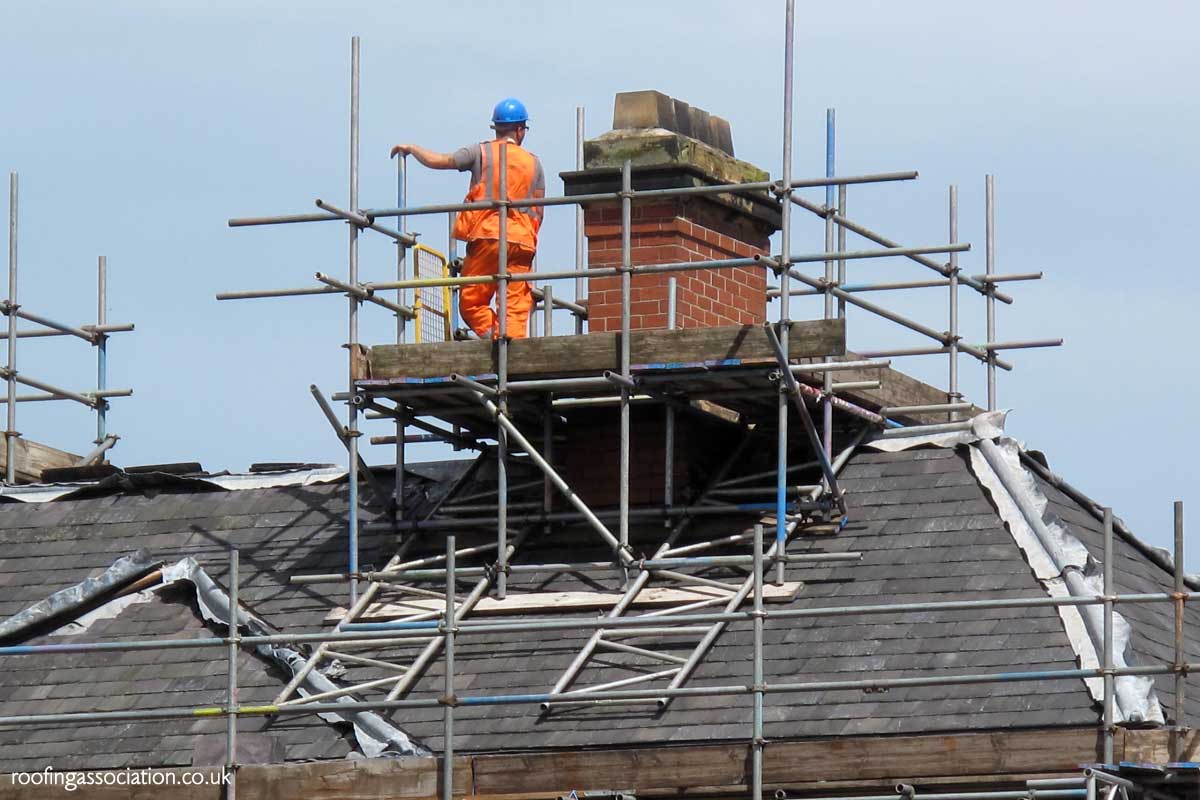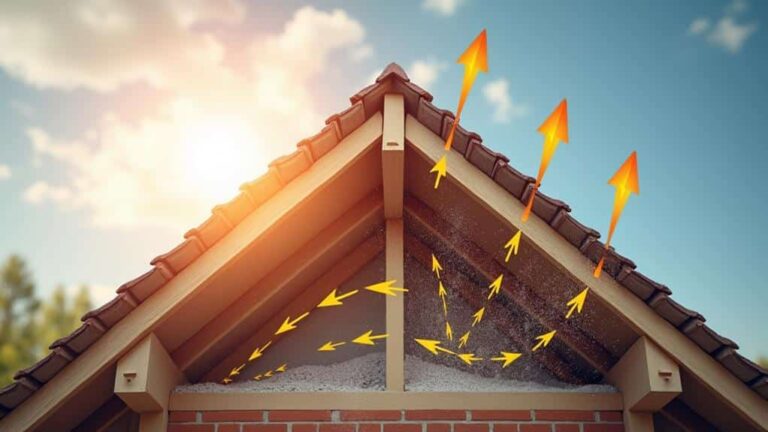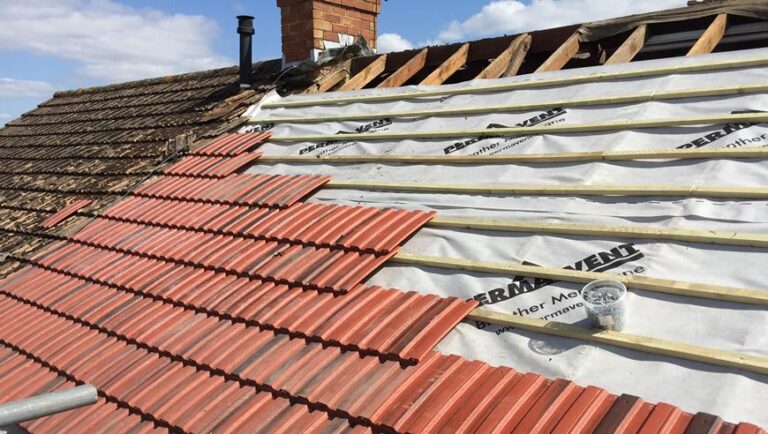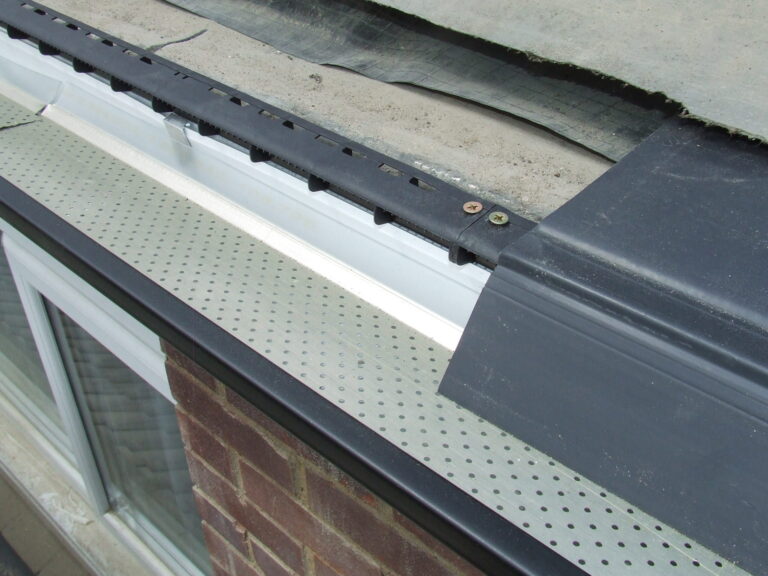Chimneys are not used as much as they once were and are now just old brickwork that takes up space in living rooms and bedrooms. Not only that they are also a vulnerable area in your roof and if unkept let in damp, water and the cold in winter. You may be having problems with your chimney or wish you had the extra space in the house so are considering removing it. The question is, do you need full or partial chimney removal? It can be a big decision to make, especially if you want the chimney removal throughout the whole house. Continue reading below to find out the pros and cons of chimney removal to help you with your decision.
What Does “Partial” or “Full” Chimney Removal Mean?
Chimney removal does not mean one thing, there are different options available to removal the full chimney or partial sections.
- Partial chimney removal: This consists of removing on section of the chimney breast, this could be to just below roof level or a chimney breast from one room.
- Full chimney removal: Here, everything goes inside and outside, including the breast, flue, and the stack.
What makes sense for you? It often comes down to your home’s layout, what’s giving you trouble, and how much you want to spend.
Why Think About Partial Chimney Removal?
Many times, it’s about doing just what you need instead of a big, messy job you don’t want. Partial removal can solve specific headaches without turning your whole house upside-down. If your chimney is not in too bad condition Point Roofing & Guttering could carry out chimney repairs to save you having to pay out for a removal.
Freeing Up Space Where You Need It
- Chimney breasts eat up valuable room, especially in compact houses.
- Take one out of a small bedroom, for instance, and you might finally squeeze in that wardrobe or make space for a desk.
Ever looked at a room and thought, “If only that brick wall wasn’t there, I could actually use this space”? A partial removal clears the way.
Fixing One Trouble Spot
- Tops of chimneys take a beating from wind and rain. The bricks crack, and sometimes you start worrying the whole stack could come down in a storm.
- If just one bit is falling apart, dealing with that section often sorts the issue purely and simply.
Are you always watching your roof after every downpour? Sorting the weak bits now can save you from future repairs.
Saving Money Where It Counts
- Tackling a smaller project means a more manageable bill. The less you have to demolish, the lower the cost and fuss.
- If the problem is limited, a partial removal stops you from forking out for unnecessary work.
What could you spend the extra savings on maybe a new sofa, or redecorating the space you just reclaimed?
When Do People Choose This Option?
- An outside stack developing leaks, but inside is still solid so just the stack is removed.
- A living room made awkward by a chimney breast, take it out and suddenly the room opens up.
When Going All-In Is Better: Full Chimney Removal
However, sometimes you can’t just patch things up. If you’re planning major changes, or your chimney problems are bigger than one room, full removal may be the way to go.
Tackling Major Structural Problems
- If your chimney is cracked throughout or the whole thing is shifting, patching up bit by bit doesn’t work.
- Removing everything gets rid of the root problem, making your home safer and preventing worse (and pricier) issues.
Ever feel like you’re just delaying the inevitable by fixing it year after year? Sometimes it’s best to get it sorted once and for all.
Creating Space for a New Setup
- Big renovations like knocking through downstairs walls are usually easier if you aren’t working around a chimney.
- Getting rid of the whole structure lets you design whatever space you want.
Dreaming of a modern kitchen-diner or an open-plan lounge? Clear that chimney and the possibilities multiply.
Making Sure There’s No Hidden Risk
- Old, unused chimneys can play host to nesting birds, bits of debris, or a surprising amount of dust and soot.
- Total removal gives you peace of mind. No risks from above, no annoying maintenance jobs left on your future “to do” list.
How much better would you sleep knowing there’s nothing lurking in those empty flues?
Ending Spend After Spend on Repairs
- Ongoing jobs like repointing, waterproofing, or fixing leaks all cost money.
- Once it’s gone, your maintenance list shrinks and those unexpected bills disappear.
Has looking after the chimney become a little annual tradition you’d rather not have? There is a way out.
Examples From Real Homes
- Terraced property where a failing chimney soaks the wall shared with next door.
- Semi-detached house with a double chimney making kitchen extension impossible until it’s removed.
Noticed Your Energy Bills Climbing or Damp Getting Worse?
Old chimneys are classic offenders for draughts that chill whole rooms, and damp patches that creep across plaster.
- Draughts: Even with a blocked fireplace, cold air often finds its way in.
- Damp: Rain seeping through bricks adds to mould and musty smells.
Did your last heating bill make you wince or have you ever found a suspicious damp patch above the skirting? Your chimney might be to blame.
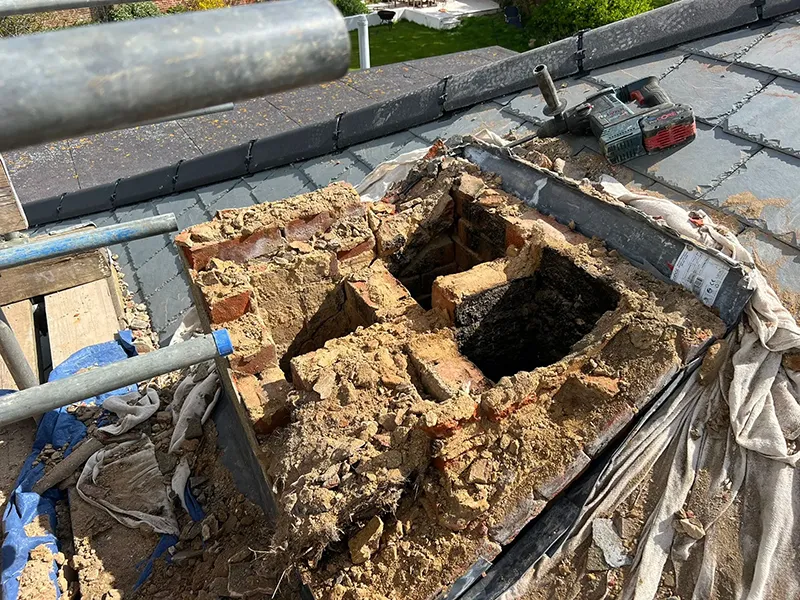
What Does It Cost and What’s Involved?
Here are some rough ideas to help you plan:
- Partial removal: Sorting a chimney stack usually lands you in the £800–£1,500 range. It all depends on the amount needing to come down, as well as how easy it is to access.
- Full removal: A complete removal of your chimney throughout the full property starts at at least £4,000 but will vary depending on the size of the chimney and any complexities in the removal process.
- Don’t forget extra costs: It isn’t just the labour, there is also waste removal costs such as a skip and also making good of the roof and the walls once the chimney is removal.
Do you want to tackle just what’s urgent now, or would sorting everything at once actually save money (and hassle) over time?
What Should You Plan For in Advance?
Best results come with good prep and solid advice. Here’s what you really need to think about:
Make Sure It’s Safe
- Chimney breasts often carry weight from the floors or walls above. A structural engineer checks what can safely be removed and what extra supports, like RSJ beams are needed.
- This step keeps you from accidentally creating a much bigger, dangerous problem.
Would your peace of mind be worth a quick check from a professional before getting started?
Get Proper Permission
- Sharing your chimney wall with a neighbour? In most cases, a Party Wall Agreement is required.
- All work has to meet Building Regulations and it’s worth having it signed off for your own records and if you ever want to move.
Is your paperwork ready? Keeping neighbours and building control in the loop keeps your project running smoothly.
Think Through the Mess
- Any demolition is going to be dusty. Have a skip booked, or be prepared for several runs to the tip.
- There could be certain items such as asbestos that needs disposing of properly.
Removing a chimney can be a messy job so you need to make sure you have the right clean up measures in place to avoid and problems or damage to your home.
Why a Professional Is Worth Every Penny
It’s tempting to save money and have a go yourself, but chimney removal is risky business. The weight, brickwork, and building regs make it a job for the pros.
- Pick a builder or roofer who’s done it before: You should use a professional who has experience with removing chimneys, roofers are your best option as they often remove chimneys down to below roof level.
- Hire an engineer or surveyor: Getting the roof inspected first will help with removing the chimney safely, the last thing you want is parts falling and causing damage.
Getting three quotes is always smart, have you shopped around and checked reviews before choosing your team? If you need a quote from Point Roofing & Guttering for your chimney removal then please contact us.
What Changes After Chimney Removal?
It’s remarkable how different your space can feel without that old stack and breast.
- More usable area: Furniture fits better, alcoves are gone, and new storage solutions become possible.
- Warmer, cosier rooms: No more draughts and your home feels warmer.
- An extra selling point: Removing chimneys adds vital square metres to your home increasing the value, better energy ratings are also a bonus.
What could you do with the extra space in your home?
Time to Make a Decision?
Every house is different, and every owner’s plans are personal. Sometimes, a simple partial removal is all you need to make things better. In other cases, a total overhaul is worth the effort. Take your time, ask advice, compare prices, and imagine how you want your home to feel in the end. If taking out that chimney solves more problems than it creates, why not take the leap?


